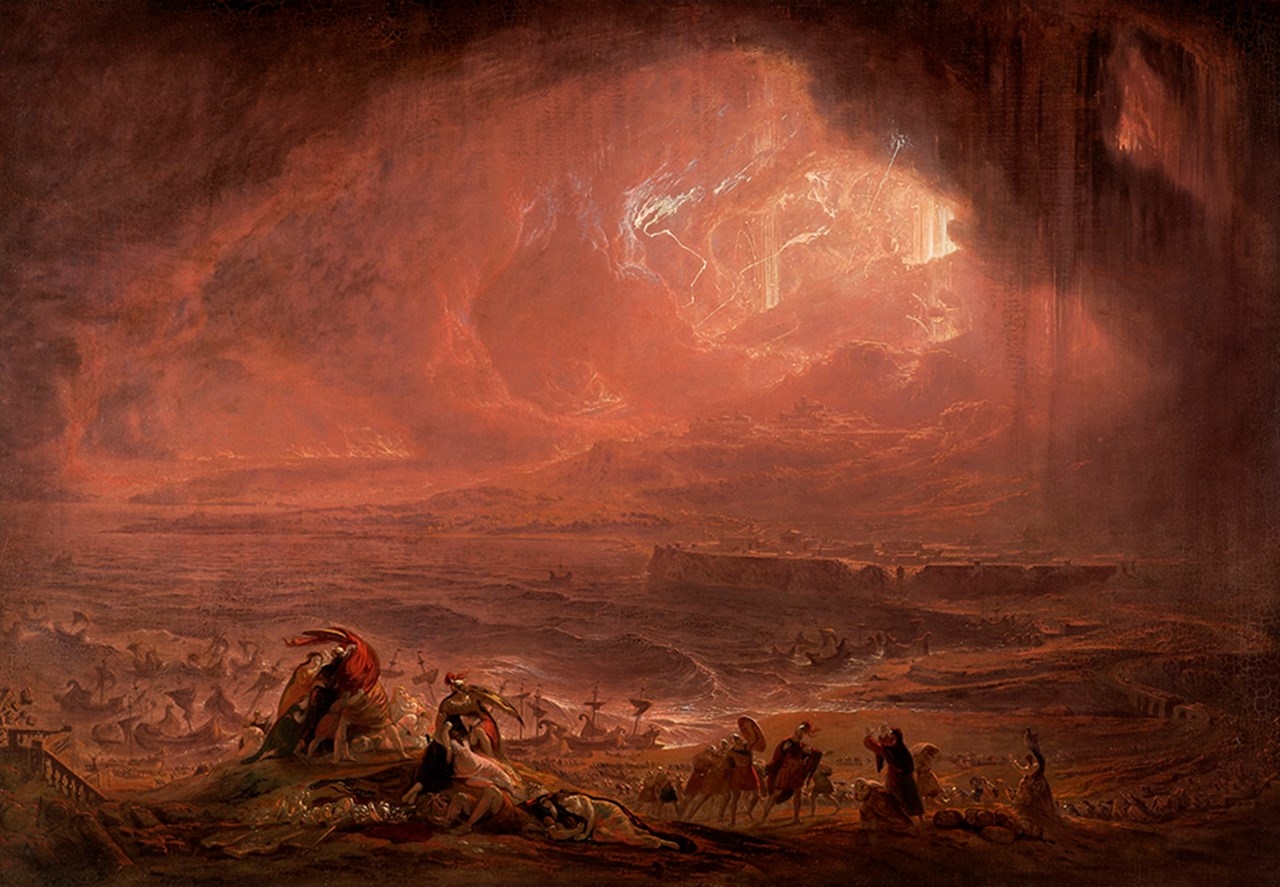Threats of doom and apocalyptic moods characterize our connected and media-driven contemporary world, but the fear of doom is not new. Doomsday prophecies have followed humanity throughout history and have appeared in various guises.
The exhibition Apocalypse. From Doomsday to Climate Threat offers a journey through doomsday fantasies, prophecies, dystopian social criticism – and magnificent works of art that exude both anxiety and creativity. Here, the art history of doomsday is depicted from the Renaissance to the present day, using a wide selection of paintings, sculptures, videos and graphics, and dramatic scenography.
The doomsday motifs of the Renaissance and Baroque coexist with the grand doomsday scenes of Romanticism, the fateful images of Symbolism, modern dystopias and science fiction. The exhibition also features contemporary works that deal with themes such as the climate crisis, the threat of war, rapid technological development and AI. The focus is on Western art with an emphasis on the Nordic countries and Europe.
Collection meets contemporary
art Striking works of art from the museum’s own collection meet contemporary art and significant international loans from European museums, with works by the romantics Johan Christian Dahl and John Martin, the symbolists Ferdinand Hodler and Evelyn De Morgan and world stars such as Georg Baselitz and Anselm Kiefer. Contemporary artists such as Anna von Hausswolff, IC-98 and Cajsa von Zeipel contribute with sound works, video works and sculpture.
Visions of a new era
The art history of doom is far from pitch black, there are also glimmers of light. The exhibition also includes post-apocalyptic, brighter future worlds and visions of a new era. In the creative desire that the thought of doom awakens, there is hope for a more humane world to hold on to in our troubled times.
Research projects as a starting point
The exhibition takes its starting point from two research projects. From Pompeii to Fukushima: Time, intermediality and transregional imaginaries in disaster discourse (Anders Ekström et al.) which, among other things, studies the mediation of disasters from 18th-century spectacular theatre to today’s news images, and Religion and the Natural Sciences in Early Modern Scandinavia (Håkan Håkansson), about, among other things, the role of doomsday prophecies in the borderland between science and religion in 16th- and 17th-century Europe.




